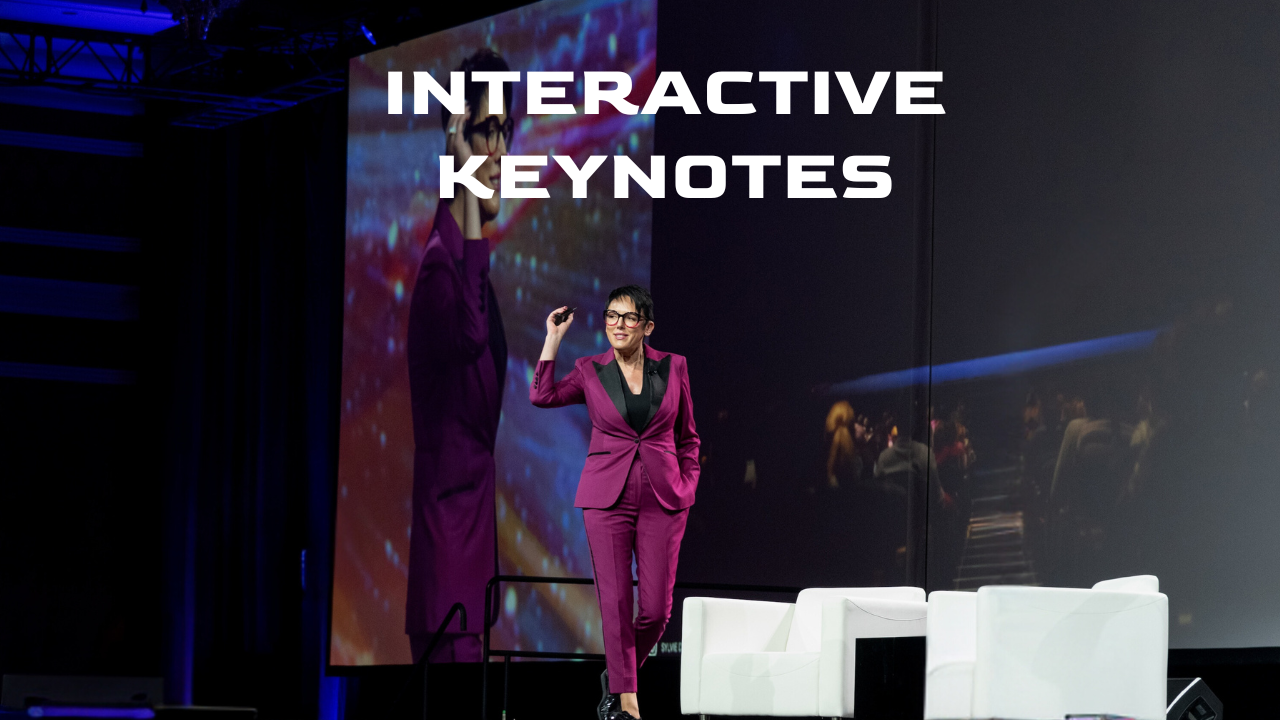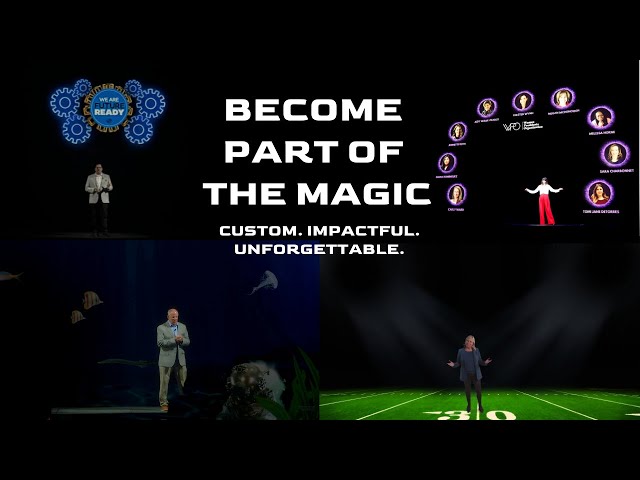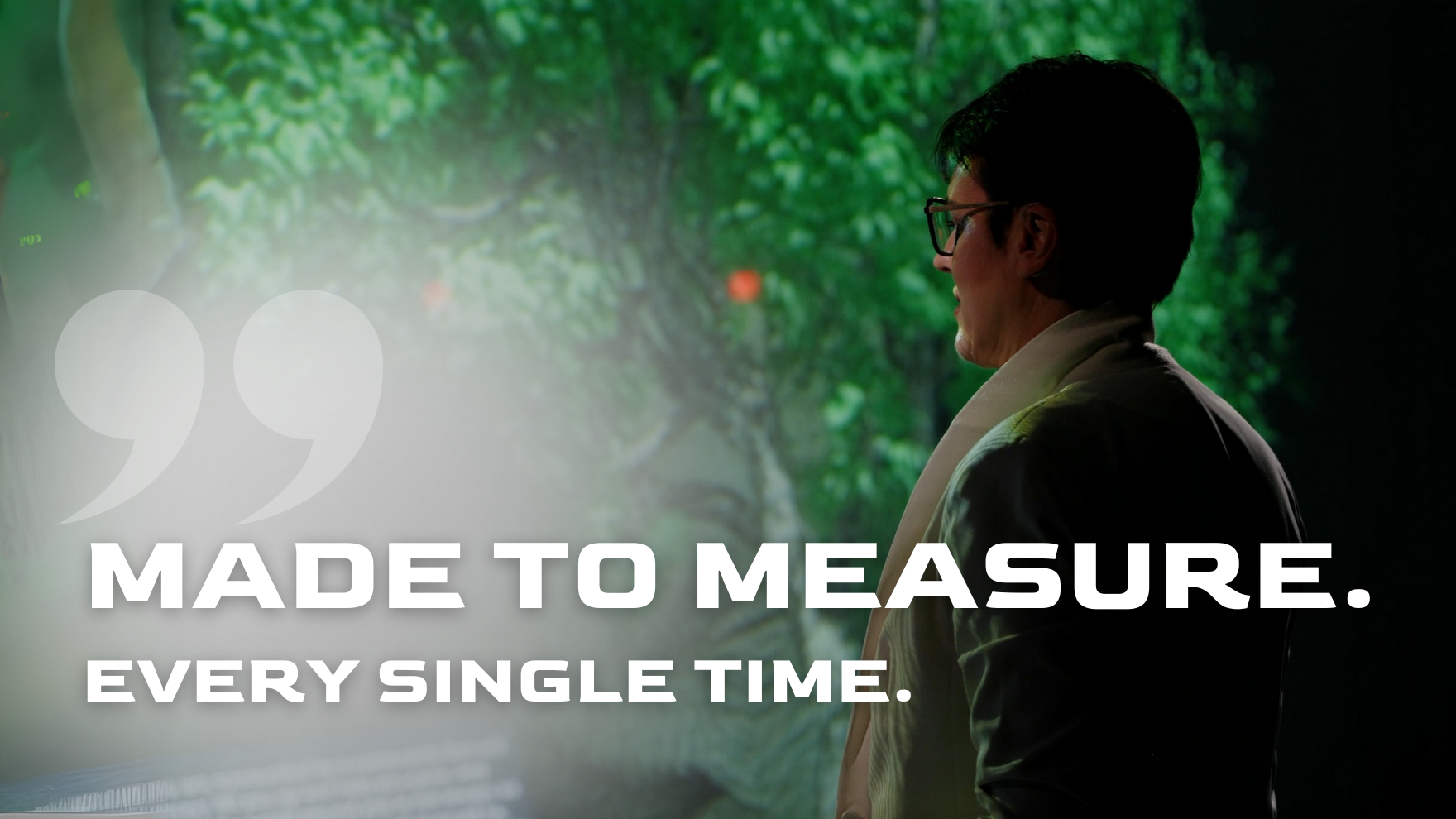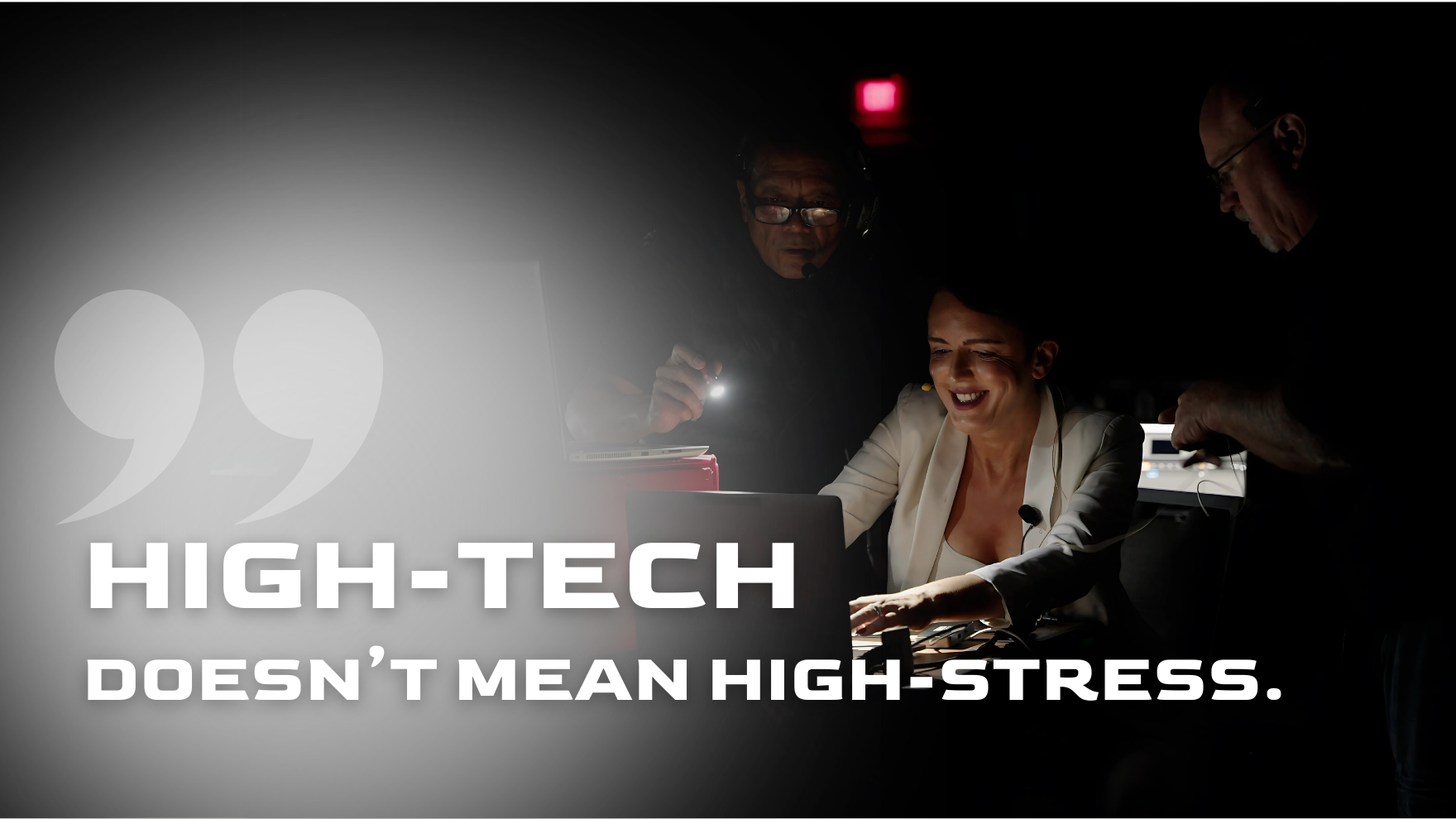Strategies from a marketing speaker to help professionals master first impressions
As any experienced marketing speaker will tell you, first impressions aren’t just important—they’re everything. In an attention-starved digital world, the window to make an impact is shrinking, and marketing professionals must learn how to captivate customers in mere seconds—and also themselves, in person.
At the CRMC conference, I had the opportunity to speak to an audience of innovative marketers about this very topic—and later, dive deeper into it during an insightful interview with The Wise Marketer. We explored how first impressions aren’t just surface-level—they’re strategic tools. And when used intentionally, they can elevate how customers perceive your brand and determine whether they engage with you at all.
Key Takeaways
A marketing speaker can teach how first impressions directly impact customer trust and engagement.
Marketers have just seconds to influence perception—something every marketing speaker should emphasize.
Creativity, care, and trust are the three feelings customers want to experience first.
The ABCDE framework helps marketers assess and improve their first impression across every touchpoint.
Consistency in behavior, communication, and digital presence builds long-term credibility.
A marketing speaker shows teams how to align appearance and environment with intentional branding strategies.
The Science Behind Snap Judgments
As a marketing speaker focused on perception, I’ve spent years studying how the human brain processes first encounters. Neuroscience tells us that people make snap judgments about someone within the first seconds of meeting them. And it doesn’t stop at people—brands, products, and services are judged just as quickly. From email subject lines to landing pages, from tone of voice in copy to design, every customer touchpoint is a first impression. These rapid-fire evaluations influence everything: trust, credibility, relevance, and ultimately, conversion.
And marketers are keenly aware of the importance of first impressions when it comes to digital assets—campaign visuals, landing pages, email subject lines. But what’s often underestimated is the impression they themselves make as professionals. Whether it’s pitching bold ideas in a boardroom, negotiating agency contracts, presenting strategy to leadership, or networking with industry peers—they are part of the brand story too.
As a marketing speaker, I help professionals in this field understand that their personal presence is not separate from the brand they represent—it’s an extension of it. When marketers align their own appearance, behavior, and communication with the values they advocate for externally, they don’t just sell better—they lead better, persuade faster, and inspire more trust from the inside out.
What Customers Want to Feel First
I had the opportunity to share insights from my research on customer expectations and first impressions at CRMC, one of the most respected conferences in the retail marketing industry. CRMC brings together the brightest minds from top-tier consumer brands—connecting marketing leaders who are responsible for shaping loyalty, driving personalization, and transforming customer engagement. It’s where ideas become action, and where innovative leaders gather to learn what truly resonates with today’s consumers.
In my keynote, I focused on one central truth: before customers understand your product, your price point, or even your value proposition—they feel something. And that feeling informs everything that follows. When people first encounter your brand—there are three emotional signals they’re scanning for, often without even realizing it: creativity, care, and trust.
These aren’t buzzwords. They’re the emotional shortcuts our brains use to determine whether we’re willing to engage. But here’s the part many marketers miss: these expectations aren’t just placed on your brand, your products, your campaigns—they’re placed on you, too.
Your audience isn’t only evaluating your message. They’re evaluating the messenger.
1. Creativity
Marketing that breaks through the noise is imaginative and intentional. It surprises people with something fresh. Creativity isn’t just clever visuals—it’s about solving real problems in unexpected ways. And that same level of creative thinking must show up in you. Are you offering fresh perspective in the boardroom? Are you willing to disrupt outdated patterns in your strategy sessions? As a marketing professional, your ability to embody creativity—visually, behaviorally, and strategically—is part of the first impression you make.
2. Care
People can sense whether a campaign was made for them or just at them. Care shows up in personalized touches, thoughtful user journeys, and empathy-driven messaging. But care is also demonstrated by the person behind the campaign. Do your clients, teammates, and peers feel seen, heard, and valued in their interactions with you? Do you take the time to ask the right questions and actively listen? The more you show up with genuine care, the more customers will associate your brand—and your leadership—with empathy and respect.
3. Trust
Trust is built (and broken) in an instant. Your messaging, tone, design, and follow-through all contribute to whether a customer feels safe engaging further. Consistency, transparency, and professionalism create credibility that’s hard to fake—and impossible to ignore. Likewise, trust in you is shaped by how reliably you show up. Are you consistent in your values, prepared in your presentations, and accountable in your decisions? Do others know what to expect from you—both in performance and professionalism? If you want your campaigns to earn trust, you need to project it in every room you’re in.
Understanding these emotional triggers—and aligning both your brand and your personal presence to reflect them—is one of the most powerful shifts any marketing professional can make. As a marketing speaker, I’ve seen how much more effective teams become when they realize that they are the brand just as much as the creative they produce.
The ABCDE Framework for Memorable Marketing Impressions
Once you understand what customers want to feel first—creativity, care, and trust—the next challenge is making those feelings stick. That’s where intentional strategy comes into play. Strong emotional impressions aren’t accidents; they’re the result of thoughtful, aligned choices across every interaction.
I developed the ABCDE Framework to help marketing professionals become more aware of the five key dimensions that shape perception. Each of these touchpoints influences how your audience—customers, peers, partners, even internal stakeholders—decides whether to trust, engage, and follow your lead.
This framework doesn’t just apply to how your brand is perceived. It applies to each marketer. Because whether you realize it or not, you are being evaluated every time you step into a meeting, pitch a campaign, join a Zoom call, or connect on LinkedIn. The way you manage these impressions can mean the difference between being heard—or being overlooked.
A | Appearance
How you and your brand show up visually matters—a lot. From campaign design to personal presentation, appearance creates the first frame of perception. As a marketing professional, your visual credibility is built through your own appearance, too. Are you dressed in a way that reflects confidence and attention to detail? Does your physical presence communicate energy, creativity, and professionalism? The way you show up visually—whether on a conference stage or on a client call—sets the tone for how seriously others take you.
B | Behavior
Behavior signals your intent and values. For brands, this shows up in customer service tone, delivery promises, and reputation. But your own behavior as a marketing leader—the way you interact—shapes trust long before results do. Ask yourself: Do you have a positive attitude? Do you lead with composure in high-pressure moments? Do you keep your commitments and lead by example? Your behavior speaks volumes—even when you’re not speaking at all.
C | Communication
Communication is where your messaging lives—your tone, clarity, timing, and ability to adapt across audiences. As a marketer, this means not just being a good writer or presenter. It means tailoring your communication style to meet the needs of each situation, whether you’re influencing up, managing down, or collaborating across teams. Are your ideas clear? Are your messages audience-centric? Do your words build alignment and inspire action?
D | Digital Footprint
Your digital footprint is often your first handshake with the world. Prospective clients, employers, and collaborators are likely Googling you before they ever meet you. As a marketing professional, your digital interactions should mirror your brand’s best self. Is your LinkedIn up to date and aligned with your expertise? Do your posts reflect what you stand for? Have you Googled yourself lately? These details matter—and they shape perception long before you get a chance to do it yourself.
E | Environment
Environment includes the spaces you create and the company you keep—both in-person and online. Brands are judged by the platforms they show up on and the partnerships they cultivate. For marketing professionals, your environment also says something. Who’s in your network? What’s your Zoom background? What types of relationships do you invite and nurture? The culture and context you surround yourself with—both physically and professionally—contribute to how others perceive your values and potential.
The beauty of the ABCDE Framework is its practicality. You don’t need a rebrand or a big campaign to improve your first impression—you need intentional choices. Every marketer has access to these five levers. The more thoughtfully you pull them, the more influence you earn—not just as a representative of your brand, but as a leader in your own right.
Why a Marketing Speaker’s Perspective Adds More Than Inspiration
In an industry obsessed with data and dashboards, it’s easy to overlook the human side of marketing—the way people actually feel when they encounter your brand or your team. That’s where the lens of a marketing speaker becomes uniquely valuable. It’s not just about delivering a keynote; it’s about bringing a different vantage point to the table—one that bridges behavioral science, real-world strategy, and lived audience psychology.
A marketing speaker has the space to step back from the campaign calendar and zoom out. We don’t just look at open rates or conversions—we look at what motivates human beings to engage, to trust, and to act. We see how subconscious biases shape customer decisions. We understand how team dynamics influence the consistency of a brand’s voice. And we challenge professionals not just to craft a message—but to be the message.
For example, most marketing professionals are fluent in targeting the external customer journey. But how often do they examine the internal perception journey? How do their internal stakeholders perceive marketing’s value? Do their colleagues see them as strategic drivers or service providers? As a marketing speaker, I help teams surface these questions—because perception isn’t just for the end user. It exists inside your organization, too.
And that’s where transformation happens. Because once a marketing team learns to own its own first impression—how it shows up in meetings, in pitches, on camera, in conflict—it becomes more than a team. It becomes a trusted force of influence.
So yes, I bring data. I bring insights. But most of all, I bring a mirror. Not to critique, but to help people see what their audience sees—and use that knowledge to show up more intentionally, more credibly, and more powerfully than ever before.
ABOUT THE AUTHOR
Sylvie di Giusto, is a globally respected marketing speaker known for delivering unforgettable 3D immersive presentations and high-impact interactive programs. With more than a decade of experience in retail, she helps marketing professionals and organizations harness the power of perception to elevate brand presence, strengthen customer relationships, and drive measurable marketing results. As the author of Discover Your Fair Advantage and The Image of Leadership in Retail and Consumer Goods, Sylvie combines behavioral science, branding strategy, and emotional intelligence to equip marketing teams with tools that lead to real-world success. Her engaging keynotes challenge audiences to rethink how they show up—and why it matters.
Ready to give your audience more than just a message—ready to give them a moment they’ll remember, act on, and talk about long after the event?
If you’re planning a conference for marketing professionals and want a marketing speaker who speaks their language—and challenges their thinking—let’s create an experience together that leaves a lasting imprint. Reach out here to explore how we can make your next event stand out—for all the right reasons.







